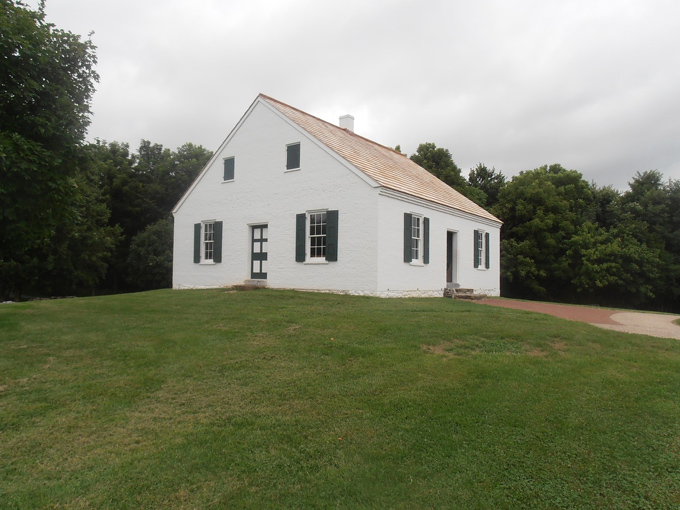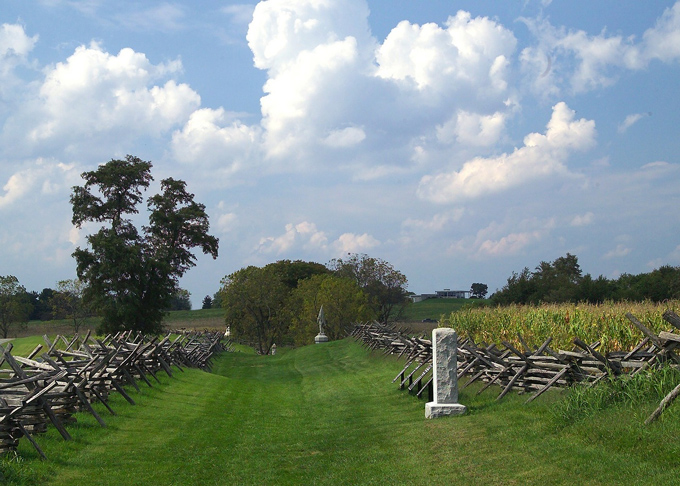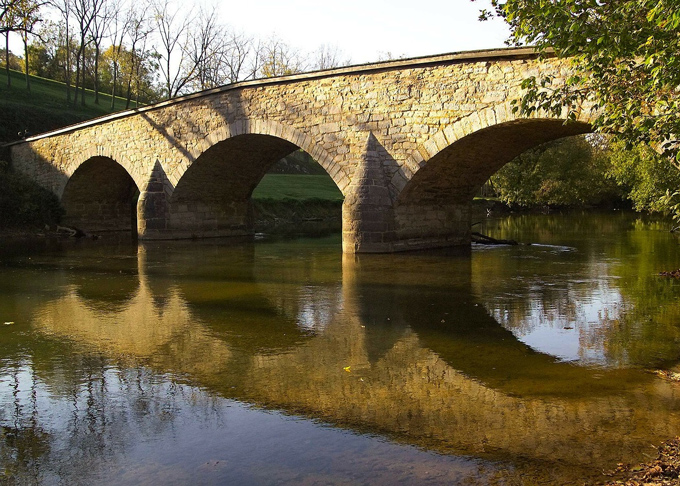The Liberators
The Battle of Antietam occurred on September 17, 1862, in Sharpsburg Maryland. The battle was named after a creek in the region. It was the bloodiest one-day battle in American history. As Robert E. Lee and his Army of Northern Virginia attempted to assert the will of the Confederacy in the North, they were followed by Union General George B. McClellan and the Army of the Potomac into Maryland. Lee, believing the majority of Marylanders were being held in the Union against their will, thought he and his army would be regarded as heroes or liberators as he entered the border state. In reality, however, the sentiments of western Marylanders had turned toward the Union, and Lee's Army was regarded with suspicion.
Serendipity Wasted
Before the battle began, Union forces had serendipitously found a copy of Lee's battle plan wrapped around three cigars. The plans indicated that Lee had divided his army and sent brigades to Harper's Ferry, Virginia, and Hagerstown, Maryland. This allowed for Union forces to attack each brigade in isolation, but General McClellan failed to act quickly enough and the opportunity was lost.
McClellan's Indecision is Costly
On September 15, General Robert E. Lee positioned his army of 18,000 in a defensive position behind Antietam Creek in the town of Sharpsburg. McClellan's Army arrived in town the same night with over four times the number of soldiers as Lee’s Army. McClellan, however, overestimated the strength of the Confederates, causing him to delay an attack. During the delay, Lee was reinforced by the corps of General Longstreet and Jackson.
Control of the High Ground near the Dunker Church
 |
The Dunker Church today at Antietam National Battlefield |
On the morning of September 17th, General McClellan ordered General Joseph Hooker to attack the Confederate left flank for the purposes of occupying the high ground near the Dunker Church. A vicious and violent battle ensued in the cornfield adjacent to the church featuring bayonet charges, hand-to-hand combat, and gun battles at close range. Hundreds of soldiers were killed in this initial combat, and neither side had gained a clear advantage. One brigade, known as the Louisiana Tiger Brigade lost 323 out of 500 men when they were isolated. Hooker’s brigade lost 2,500 men in a matter of two hours and historians believe the cornfield at the Antietam Battlefield changed hands at least fifteen times during the morning and afternoon. By the end of the morning, casualties for both sides numbered over 13,000.
Bloody Lane
 |
Bloody Lane Today |
In the afternoon, Union forces struck the center of the Confederate line in an attempt to divert some of their forces from a patch of forest known as the West Woods. Confederate forces were in a good defensive position atop a hill in an old, sunken road. From the Sunken Road, Confederate forces fired withering rounds into the Union brigades, inflicting terrible casualties. Union forces eventually exploited a weakness in the Confederate defenses and began to break through. Amidst growing confusion, the Confederates along the Sunken Road fled toward Sharpsburg. Union forces, however, were violently driven back during their pursuit by Longstreet's Brigade. All told, over 5,600 total casualties were recorded along the Sunken Road, which would eventually be called Bloody Lane.
Burnside's Bridge and the Confederate Retreat
 |
Burnside's Bridge Overlooking Antietam Creek |
Toward the later afternoon, the battle moved to the southern end of the battlefield, particularly for control of a bridge spanning Antietam Creek that would come to be known as Burnside's Bridge. Union Major General Ambrose Burnside ordered his soldiers to storm the bridge, where they took heavy fire from Confederate gunners. It took three separate attempts before Union soldiers successfully crossed. While Burnside's men crossed the narrow bridge with their artillery and wagons, General Robert E. Lee took the time to reinforce the right flank of his army. Numerous assaults and repulsions marked the remainder of the afternoon. By 5:30 p.m., it was clear there would be no winner. In total, the two sides suffered almost 23,000 casualties, making it the single bloodiest day in American military history. Although Lee expected another Union assault on the 18th, it never came, and an informal truce was established so each side could collect and tend to the injured and dead. On the night of the 18th, Confederate forces left Sharpsburg, crossing the Potomac River back to Virginia.
A Devastating Turn of Events for Robert E. Lee
Despite the fact that neither army was victorious, Union soldiers paraded through the streets of Frederick, Maryland, after the battle. The Confederate foray into Northern territory ultimately proved unsuccessful, delivering a crushing blow to its hope for foreign recognition. President Lincoln, meanwhile, saw Antietam as enough of a Northern victory to have the confidence to issue the Emancipation Proclamation five days after the battle. This landmark proclamation freed all slaves in “enemy territory” and ensured that slavery would cease to exist if the North were to win the war.
Antietam and Emancipation Proclamation Activities and Activities
Articles
Activities
- Battle of Antietam Paragraph Paramedics - Find and correct the spelling, punctuation, and usage errors in the paragraph. Click on the error and then type in the correction. Immediate feedback is given.
- Emancipation Proclamation Reading Comprehension - Online - This resource includes a historical passage and ten multiple choice questions. It gives immediate feedback. In addition, when you click the "listen" button, you can hear the passage while it highlights the text.
- Battle Breakdown: Antietam - This awesome printable helps students to essentially diagram battles! It requires students to write the cause, the players in the battle, the victor, and the effects of the battle. It comes with a descriptive narrative about the battle that students can use.
- Battle of Antietam Fact or Fiction - Printable - This fun activity requires students to read a Battle of Antietam passage and then, to sort 10 statements into those that are facts and those that are fiction. The program gives immediate feedback.
- Battle of Antietam Fact or Fiction - Online - This fun activity requires students to read an Antietam passage and then, to sort 10 statements into those that are facts and those that are fiction.
- Battle of Antietam Correct-me Passage - Online - This fun activity requires students to correct a passage about the Battle of Antietam that has nine factual errors. Students first must discover the errors, then click on them and select the correct answer from the drop down menu.
- The Great Squander: McClellan squanders an incredible opportunity at Antietam - This historical prompt challenges students to consider the great opportunities squandered by Union General George McClellan prior to Antietam. Then, to think of and write about a time when they may have squandered a "golden" opportunity.
- The Emancipation Proclamation - I'll Always Remember Where I was... - This historical prompts requires students to imagine the earth-shaking effect the news of the Emancipation Proclamation had on Americans in 1862. In the spirit of the Emancipation Proclamation, students must write about the biggest news event of their lives and describe its impact.